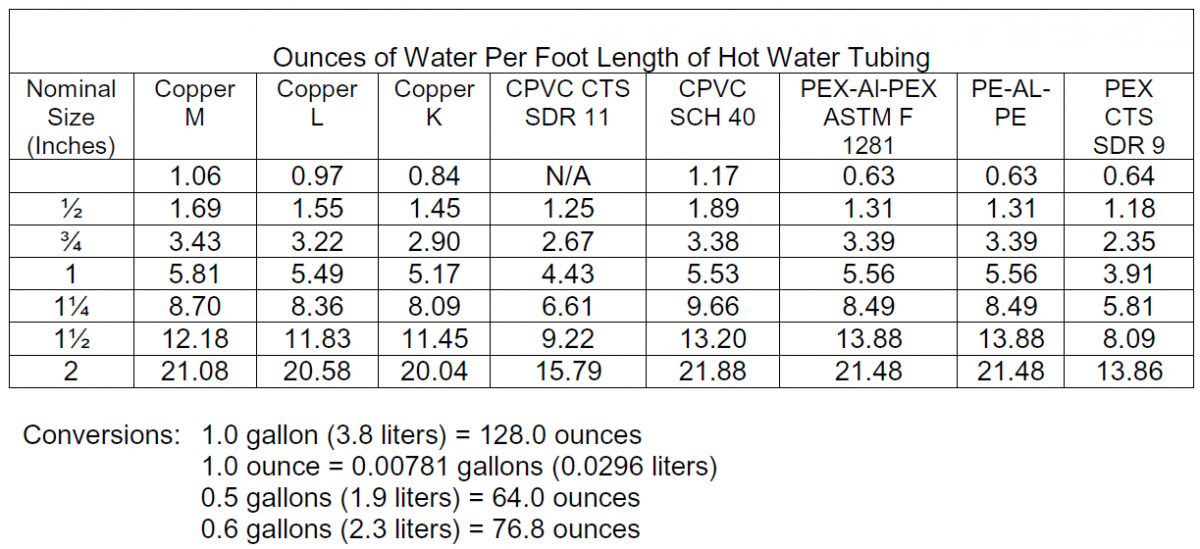Hot water delivery systems shall meet the efficiency requirements found in Section 3.3 of the EPA WaterSense New Home Specification (Version 1.2, effective July 24, 2014). Under the DOE Zero Energy Ready Home program, the approved verifier may also confirm compliance with these requirements. These requirements are stated below:
Hot Water Delivery System – To minimize water wasted while waiting for hot water, the hot water distribution system shall store no more than 0.5 gallons (1.9 liters) of water in any piping/manifold between the hot water source and any hot water fixture. To account for the additional water that must be removed from the system before hot water can be delivered, no more than 0.6 gallons (2.3 liters) of water shall be collected from the hot water fixture before hot water is delivered. Recirculation systems must be demand-initiated. Systems that are activated based solely on a timer and/or temperature sensor do not meet this requirement. To estimate the approximate volume of water the piping system can hold, see the values for volumes of water found in various widths and types of pipe shown in Table 1 (from Appendix B of the EPA WaterSense specification; modified from 2009 International Plumbing Code Table E202.1. International Code Council Jan 2009). The EPA WaterSense New Home Specification Guide for Efficient Hot Water Delivery Systems describes three hot water delivery system design options that have the potential to be more efficient than the traditional trunk and branch layout: core, whole-house manifold (also called central manifold), and demand-initiated recirculation. These are also described in the Solution Center guides Core Plumbing and Demand Plumbing.

How to Meet the EPA WaterSense Inspection Protocol
For builders seeking certification through the U.S. Environmental Protection Agency's WaterSense program, an inspector will test all hot water delivery systems to ensure compliance with the WaterSense new home specification’s requirements using the testing protocol described below and found in the EPA's Inspection and Verification Guidance for WaterSense Labeled New Homes.
- Do not use the hot water delivery system for several hours prior to the inspection to ensure that it is completely cool prior to testing.
- Identify the fixture farthest from the hot water source. Verify that the water heater is on.
- If there is a hot water recirculation system, verify that it is not a timer- or temperature-based recirculation system. For demand-initiated hot water recirculation systems, activate the switch and wait 40 seconds.
- Place a bucket or a flow measuring bag (pre-marked for 0.6 gallons or 2.3 liters) underneath the hot water fixture. (Note that for inspection purposes, the WaterSense new home specification accounts for an additional 0.1 gallons of water above the 0.5 gallon requirement that must be removed from the system before hot water can be delivered.)
- Turn the hot water completely on, place a digital thermometer in the stream of water, and record the starting temperature.
- Once the water meets the pre-marked line (approximately 24 seconds for a lavatory faucet), record the ending temperature and turn off the water.
- Note the temperature increase. The hot water delivery system meets the WaterSense new home specification criteria if the temperature increases by at least 10 degrees Fahrenheit.
- Builders that do not initially pass will be given an opportunity to correct systems. However, the inspection cannot be performed again until the system completely cools down.